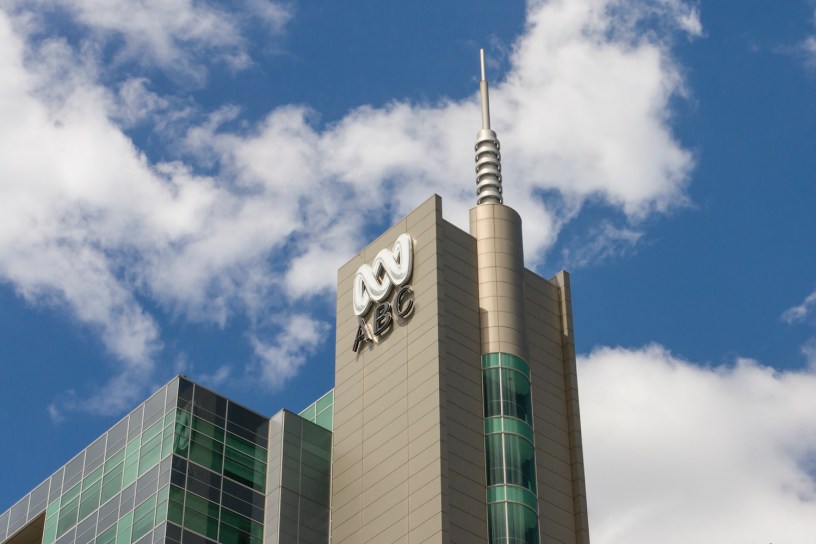The Federal Government has committed $4.2 billion in funding for the public broadcasters over the next three years, while concurrently outlining the next steps in its media reform agenda.
The package includes $3.3 billion for the ABC and $953.7 million for SBS, starting from July. The three-year indexation freeze for the ABC, which contributed to staffing and service cuts, will also be lifted.
Overall, the funding represents an increase of $87.2 million over the current triennium for the ABC and $56.7 million for SBS.
Minister for Communications, Urban Infrastructure, Cities and the Arts Paul Fletcher said the ABC and SBS were “essential components of Australia’s diverse media landscape”.
“We’ve delivered an increase in funding for both national broadcasters compared to both the 2016-19 and 2019-22 funding period,” he said.
“This funding commitment is designed to provide certainty for both broadcasters and is being announced well in advance of the next funding period to assist the ABC and SBS to develop their forward plans.”
The funding comes almost 12 months after Minister Fletcher and ABC managing director David Anderson traded barbs over proposed content obligations for the national broadcaster in the government’s media reform green paper.
In welcoming the funding, Anderson thanked the Minister for “recognising the enduring value of the ABC”.
“As the ABC’s managing director, I have consistently made the case for the resumption of indexation on the ABC’s base funding and the continued support for ENG [Enhanced Newsgathering] program,” he said.
“The triennial funding announcement is an important recognition that the ABC is needed now more than ever, and this funding is required so it can continue to fulfil its vital role in our democratic society.”
Going forward, the public broadcasters, along with the streaming services, will be subject to reporting requirements regarding their investment in Australian content, as part of reforms stemming from the green paper, which was released in November 2020.
Among the measures put forward by the government are a Streaming Services Reporting and Investment Scheme, in which services such as Netflix, Amazon Prime Video, and Disney+ will be asked to report annually to the Australian Communications and Media Authority (ACMA) on their Australian content spend. If a service’s investment is below 5 per cent, then the government would be able to impose a formal investment requirement.
It is a scheme that falls short of that proposed by industry organisations and guilds, with a joint submission to the green paper having called for SVOD/AVOD services with at least 500,000 subscribers or $50 million in annual Australian revenue to be required to spend 20 per cent of that revenue on new Australian commissions.
ABC and SBS, via the National Broadcasters Reporting Framework for Australian Content, will be asked to report to the ACMA on their Australian content “in line with the reporting obligations currently in place for commercial television broadcasting licensees.”
The government will also provide the ACMA with an additional $3.3 million over four years to support the new reporting systems.
Screen Producers Australia CEO Matthew Deaner said while the organisation was pleased to see a proposal for greater transparency around Australian content levels on the public broadcasters, there were a range of complex issues which need further consideration and refinement.
“We are concerned that the proposed threshold for the first step in the regulatory scheme of 5 per cent of gross local revenues would be an opportunity missed and would not create a meaningful amount of local content for audiences, or investment and job-creation in industry,” he said.
“A 5 per cent requirement is also a very modest return on the almost $2 billion in revenue the streaming services enjoy from operating in Australia, sitting at about $100 million annually.
“This also is an incredibly small proportion (less than 0.3 per cent) of the $37 billion the major international streaming platforms reportedly have to spend on content worldwide, and a low requirement here could see Australia miss out in global investment strategies as platforms invest in territories with more competitive regulatory settings.”
The Australian Writers’ Guild (AWG) agreed, saying the proposal was “insufficient to lay the foundation for the robust, sustainable and internationally-competitive screen industry that the government claims to support”.
“After a year of consultation with our industry, this proposal falls short,” it said in a statement.
“The Australian screen industry has waited years for firm government action on the issue of streamer regulation and the rate of obligation announced today falls far below the Australian content investment requirement that the sector has been united in calling for.”
In terms of free-to-air television, the government will establish a $7.3 million Television Research and Policy Development Program, including a Future of Broadcasting Working Group. To be established in early 2022, the group will provide a forum to progress issues relating to broadcasting technologies, including spectrum planning and consumer impacts.
There will also be an extension of transitional support to eligible regional commercial broadcasters for two additional years.
Further, the government has also announced a recalibrated drama expenditure requirement for subscription television broadcasters, as well as a $10 million Journalist Fund to support the provision of public interest journalism in the regions.
Minister Fletcher said he looked forward to collaborating further with the broadcast television sector going forward.
“As well as a number of specific actions the government is taking now, we are setting out the next steps for government to work with the broadcast television sector on a future regulatory structure that is optimised for the technology changes the sector faces,” he said.
The government has released a discussion paper outlining the key elements of the Streaming Services Reporting and Investment Scheme, with submissions sought by April 24.



